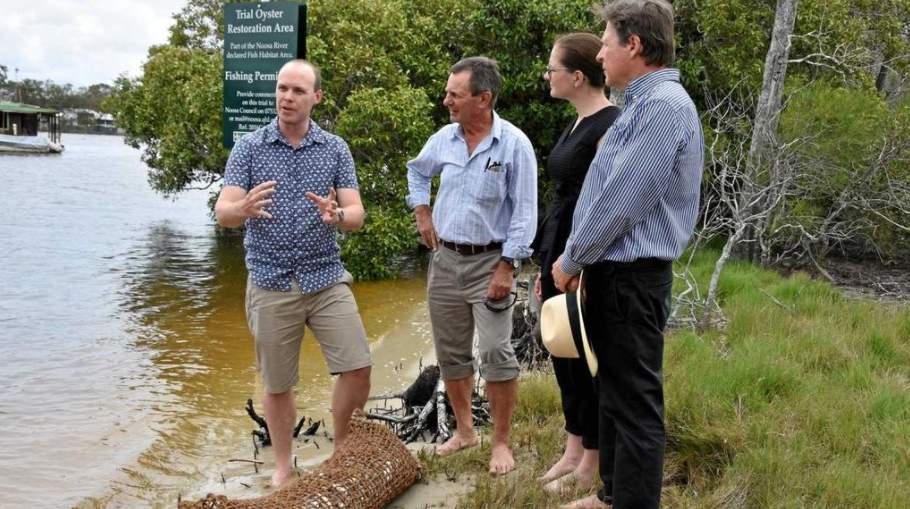
PLUMP Noosa River oysters may be back on the market in the coming years as local researchers help restore the health and marine biodiversity by opening 14 “fish hotels”
There has been no commercial oyster harvesting in Noosa estuary system since about 650 growing cages were removed from Lake Weyba in the 1960s, but now oyster reefs consisting each of nine biodegradable coconut fibres and recycled shells, are back. And University of the Sunshine Coast marine ecologist Dr Ben Gilby helping with the ambitions $1.5 million Bing Back the Fish project, is excited to find a marine fightback has already started to happen.
Increases have been noted at the reefs of the many fish familiar species like bream, flathead, tailor and whiting, attracted to these structures. And that will increase once the oyster spats still common to the river, start to bind with the old shell structures.
The USC team working with the Noosa Biosphere Reserve Foundation, the Noosa Parks Association, the Noosa Council, the Thomas Foundation and the Nature Conservancy, say this will free up the river for more fish. They have placed 110 cameras in the river system from the Tewantin ferry crossing, the river mouth and through to Lake Weyba to complete “a baseline” fish count over the past 18 months.
“It’s amazing to be working on something that is really making a difference – it really is,” Dr Gilby said.
“The reefs are the missing piece in Noosa’s jigsaw of fish habitats – we have mangroves, sandflats, seagrass, deeper channel and, crucially, improved water quality.”
Each one of these oysters that will grow in what Dr Gilby calls “fish hotels” where the fish love to dine in, is capable of filtering clean one bath tub of dirty water a day. NBRF deputy chair Clare Cartwright during a visit to a Goat Island reef said “to some degree our aquatic environment’s been neglected”.
“The oysters are gone, the prawns have diminished and the mega fish that once were here have gone,” Ms Cartwright said.
According to records, harvesting saw about three million oysters removed from the river and lakes a year until the industry collapsed more than 80 years ago. NPA’s Bryan Walsh said all the experts they have consulted have said oysters, also decimated by previous dredging, are the key starting point to bring back the fish.
“It’s all great to see it come to fruition now – it’s happened,” he said.
Mayor Tony Wellington said: “Today is only possible because of an unprecedented partnership – of ‘big ideas’ generated by the Noosa community and the modern science of fish ecology – enabling this important step to be taken.
“This project’s going to help restore biodiversity in the Noosa River and that’s only good for the health of the river, but it’s also good for tourists and locals alike.
“This river plays a very important role in the lives of many locals. It’s held in great, passionate regard by Noosa residents.”
These reefs are now to be monitored for the next three years and all the indications are for possible expansions and reintroduction of a commercial lease.
